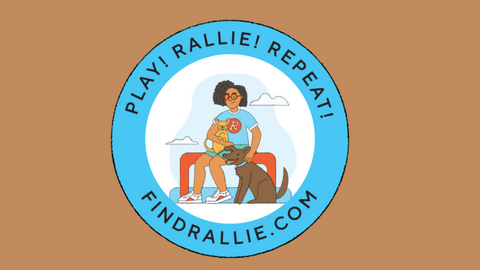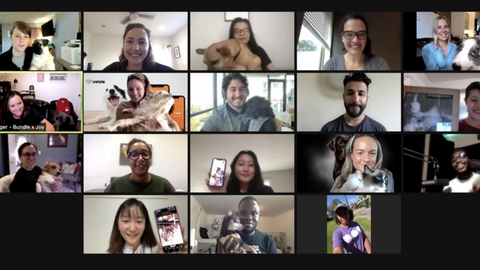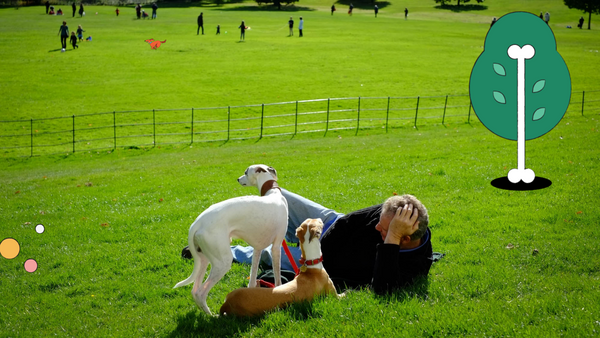It’s possible for any breed of dog to become dehydrated. However, some dogs are more prone to dehydration than others. If you have one of the breeds most likely to become dehydrated, you have extra responsibility in keeping your dog safe from dehydration. Here are a few of the dog breeds most prone to dehydration and why they are so likely to become dehydrated.
Why Might Dogs Suffer from Dehydration?
A Short Nose
Brachycephalic dogs, or dogs with very short snouts, have less room to pant, which means they may become dehydrated more easily. The shorter the snout, the more disabled the dog may be by it. Dogs with squished faces need special protection in hot weather.
A Heavy Body
Dogs that are very heavy, whether due to body type or because they are overweight, may overexert themselves more easily. Such dogs can be more prone to dehydration than dogs with a lighter build or that are at an ideal weight.
Thick Coat
It should come as no surprise that dogs that developed to thrive in freezing temperatures may not do as well in the heat. Dogs with extremely thick, heavy coats tend to get dehydrated more easily in warm temperatures. If you think that cutting the coat will help, think again. Cutting a double-layered coat can actually make the dog hotter.
Dog Breeds Most Likely to Become Dehydrated

Bulldog
The combination of an extremely brachycephalic face and a heavy low-slung body can result in a high risk of dehydration for the bulldog. While all brachycephalic breeds have a shortened snout, the bulldog has one of the most extreme examples of a squished-in face.
As with all breeds with shortened snouts, the bulldog may struggle to pant sufficiently to cool itself off. Furthermore, its body type means that simply walking can be exhausting for this dog, which can also make dehydration likely.
Boston Terrier
Boston terriers are popular and charismatic, but their highly squished-in face can make them prone to dehydration. These dogs tend to be very active and lively by nature, and sometimes they don't think to slow down in the midst of their fun long enough to cool down.
The combination of a highly brachycephalic face and a lively demeanor means that you need to take extra precautions to keep this dog from becoming dehydrated.
Chow Chow
The chow is one of the most unique breeds, with its incredibly lush coat and its blue tongue. These dogs have a brachycephalic face combined with an extremely thick coat, which can make it very difficult for them to cool down.
They can overheat easily thanks to the heavy coat, and the brachycephalic face makes it difficult for them to pant enough to cool themselves off. Native to China, the chow was developed for cool weather and extra precaution needs to be taken when they are in warm climates.
French Bulldog
The French Bulldog is among the most popular of all dog breeds at this time. They tend to do well with city living and have a more robust appearance than many other stereotypical lap dogs, which makes them the choice of many urban dog owners.
However, caution needs to be taken in hot city weather. The French Bulldog is eager to please and devoted to its people, which means that they may push themselves to keep going even when they start to overheat. This devoted nature combined with the brachycephalic face can make it difficult for the French Bulldog to slow down and cool off.
Pekingese
This confident little dog is immediately recognizable thanks to its squished face and lion-like mane with a lush, prolific coat. Pekingese were bred to be the palace companions of royalty, and cooling off in the heat has never been their strong suit. The dense, thick coat combined with a brachycephalic face, means that these little dogs may really struggle to cool off.
King Charles Cavalier
The King Charles is an endearing little dog with stunning good looks. However, their squished faces, longish hair, and tendency to be overweight can all make them prone to dehydration. Furthermore, King Charles tend to be highly devoted to their people, which means they may keep up with their people even when they should slow down.
Care must be taken with these dogs in the heat, particularly if they are overweight. Thankfully, this breed tends to like the water, so getting them to cool down isn't always a challenge.
Akita
While the Akita doesn’t technically have a brachycephalic face, their nose is somewhat shortened. This shortened snout, combined with the incredibly lush, dense coat of the Akita, means that this breed can easily become dehydrated.
Akita were bred to handle freezing temperatures, and they don't do nearly as well in hot weather. Akitas are deeply loyal to their families, and they have a very high prey drive, so Akitas may keep pace with their owner or continue chasing down a prey animal even as they become dehydrated.
Malamute
The malamute is a large Northern breed with extremely dense fur. Malamutes can handle even freezing temperatures without a second thought. They are known to choose to sleep curled up in the snow even if they have warmer shelter available.
It should come as no surprise that a breed that is so well suited to the cold may struggle in hot weather. Furthermore, malamutes are very large dogs who may overexert themselves in hot weather.
Ensure Proper Hydration for Your Dog
Keeping your dog hydrated is important regardless of what kind of dog you have, but if you have a dog that tends to be more prone to dehydration, hydrating your dog properly is even more important. Making sure your dog has access to plenty of water is key, but you may want to consider supplementing their water intake with electrolyte and hydrogen enhanced water in order to ensure even better hydration. Flavored water can also be very helpful. These techniques are effective for hard-working detection dogs and they can work well for your dog too.
___
About Rallie Blog Contributor: Coral Dawn Drake





Write Your Comment: